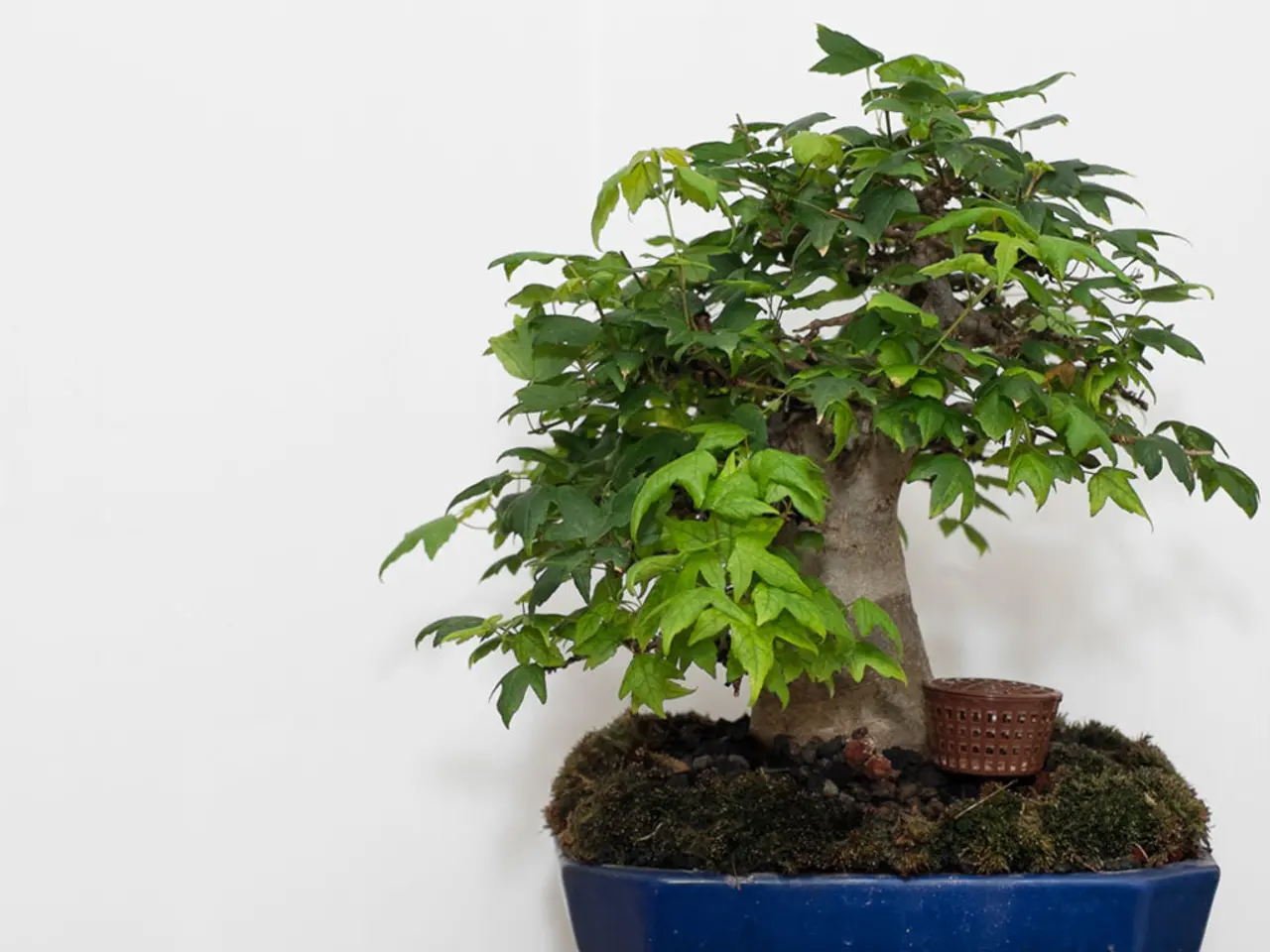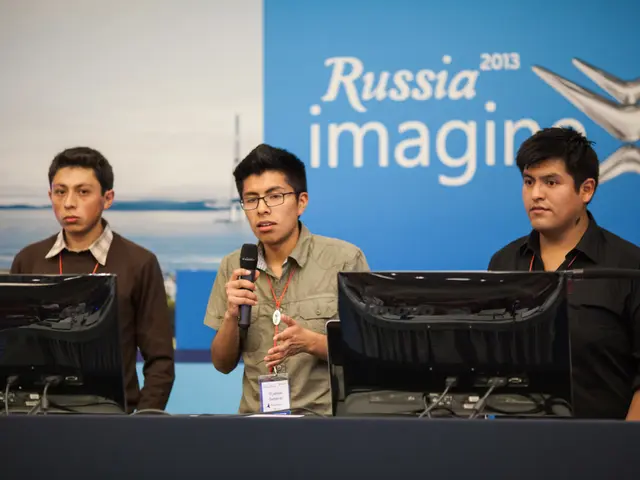Bonsai Growth under the Sun: Optimizing Placement for Success
Bonsai trees, miniature versions of their full-sized counterparts, require careful attention to thrive. One crucial element in their care is light, which plays a significant role in their growth, development, and overall vigor.
Sunlight triggers a surge in photosynthetic activity, fueling the production of sugars and organic compounds that drive Bonsai growth. The intensity and duration of sunlight are vital, as they influence cell elongation rate, affecting the growth pattern, with increased sunlight promoting longer internodes and a more open, sprawling canopy.
To achieve balanced growth, it's essential to rotate your Bonsai every 1-2 weeks to ensure even sunlight distribution. This practice helps prevent one side from receiving too much light, which can lead to stress, disease, or pest issues.
When relocating a Bonsai outdoors, its existing growth patterns may adapt to the new light environment, potentially altering branch structures, leaf density, and overall aesthetics. Therefore, it's crucial to consider factors such as orientation, surrounding microclimate, exposure to rain, natural irrigation, and proximity to water sources.
Ideal sunlight requirements for bonsai species vary depending on their natural habitat. For instance, tropical and subtropical bonsai such as Ficus microcarpa ‘Ginseng’ prefer bright, indirect light, often thriving indoors. They do well with steady light that supports photosynthesis without the risk of leaf burn. These species grow steadily when light mimics their natural environment, typically warm with filtered sunlight.
Juniper species (e.g., Juniper procumbens ‘Nana’) require bright, indirect to full sun and partial shade, growing best outdoors. Sufficient sunlight stimulates their needle development and shaping, while excessive direct sun may require humidity and watering management.
Dwarf Black Olive bonsai need full sun, with some afternoon shade in hot climates to avoid leaf stress. Full sun enhances growth vigor and foliage density, but in intense heat, partial shading and watering are important to maintain health and prevent dehydration.
Other temperate deciduous species like the Japanese Zelkova enjoy full sun to partial shade, benefiting from full sun exposure to develop strong branching patterns and vibrant autumn leaf colors. They require winter dormancy influenced by seasonal light changes.
Chinese Elm, Zelkova, and Stewartia are examples of Bonsai species that thrive with filtered sunlight. Anthocyanins, responsible for red and purple colors, are triggered by low light conditions and cooler temperatures, often manifesting in Bonsai species native to temperate climates.
The gentle, diffused light enables sensitive species to photosynthesize effectively, minimizing the risk of damage from intense radiation. During winter months, most Bonsai trees require less sunlight, as they enter dormancy, and excessive light can induce stress.
A harmonious balance between sunlight and water is vital for Bonsai health. The right amount of light ensures photosynthesis, while adequate watering supports the tree's nutrient uptake and overall growth.
Artificial lighting can be used as a supplement to natural sunlight, but it should not be a substitute and should be used judiciously to avoid over-illumination. Carotenoids, the yellow and orange pigments, are induced by high intensities of blue light, yielding vibrant autumn hues.
South-facing locations typically receive full sun, while north-facing areas receive partial shade. East- and west-facing locations receive morning and afternoon sun, respectively. Indirect sun can be achieved by placing Bonsai in a location with morning sun and dappled afternoon shade, or by using a sheer curtain or shade cloth.
For optimal bonsai health and development, matching the light intensity and duration to the species’ natural preferences is crucial, affecting everything from leaf structure to seasonal dormancy and pruning response. Using grow lights that mimic full spectrum natural sunlight (5000–10,000 Kelvin) can support indoor bonsai closely aligned with their ideal light requirements.
- Bonsai trees, like Ficus microcarpa ‘Ginseng’, thrive with steady light that supports photosynthesis without the risk of leaf burn, often making them suitable for indoors.
- Sufficient sunlight stimulates the growth of Juniper species, such as Juniper procumbens ‘Nana’, while excessive direct sun may require humidity and watering management.
- Dwarf Black Olive bonsai require full sun, with some afternoon shade in hot climates, while Chinese Elm, Zelkova, and Stewartia prefer filtered sunlight.
- For tropical and subtropical bonsai, such as Ficus microcarpa ‘Ginseng’, ideal sunlight requirements are bright, indirect light.
- The right amount of light for Bonsai trees ensures effective photosynthesis, while adequate watering supports nutrient uptake and overall growth.
- Ideal light intensity and duration for bonsai species should match their natural preferences, affecting everything from leaf structure to seasonal dormancy and pruning response.




